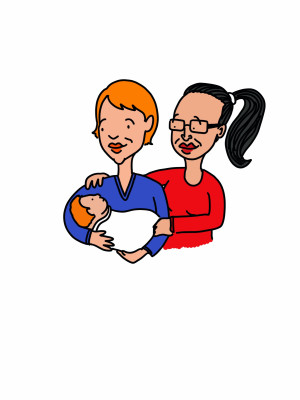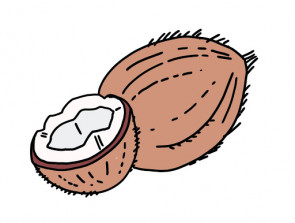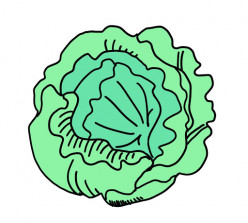Your baby is now officially an embryo and is about the size of a poppy seed.
Please visit www.nhs.uk/conditions/pregnancy-and-baby/4-weeks-pregnant/ for more information.
Local Maternity and Neonatal System
View navigation
After the birth
All births in England, Wales and Northern Ireland must be registered by law within 42 days of the child being born.
You can do this at the local register office for the area where the baby was born or local children's centres.
If you cannot register the birth in the area where the baby was born, you can go to another register office and they will send your details to the correct office.
You might not need to give all of this information, depending on who is registering the birth.
You should take at least one form of identification when you go to the office. You can use
If you’re going to the register office on your own, you may need proof of paternity from the other parent before you give their details
Having a child may affect your tax and benefits and services from your local council. The Tell Us Once service (only available in some areas) can report a birth to several government organisations in one go. The registrar will let you know if this service is available in your area.
Bring the following information to your Tell Us Once appointment:
Where the parents are married, either parent can register the birth on their own. They can include both parent's details if they were married when the baby was born or conceived.
If you are unmarried parents, the details of both parents can be included on the birth certificate if one of the following happens:
Click here to download or print 'Statutory declaration of parentage'
The mother can choose to register the birth without the child’s father if they’re not married. The father’s details will not be included on the birth certificate.
It might be possible to add the father’s details at a later date by completing an application for the re-registration of a child’s birth.
Click here to download or print ‘Application for the re-registration of a child’s birth’
Either parent can register the birth on their own if all of the following are true:
When a mother is not married or in a civil partnership, her partner can be seen as the child’s second parent if both women:
However, for both parents’ details to be recorded on the birth certificate, they must do one of the following:
Download ‘Statutory declaration of acknowledgement of parentage form’ (PDF, 31KB)

Female couples can include both their names on their child’s birth certificate when registering the birth. Both need to attend the registry office.
Male couples must get a parental order from the court before they can be registered as parents. They then need to take this information to the registry office.
If the parents cannot register the birth (for example, for medical reasons), certain other people can do it:
Once you have registered the birth, you’ll be able to buy a short or full certificate for your baby. Both kinds cost £11 at present.
If you register the birth in the area where it took place, you’ll get a certificate straight away. If you register the birth in another area, you’ll get it in a few days.
You can buy extra copies of the birth certificate from the register office at any time.
It is also important to register your baby with a GP as soon as you are able.
We asked the Superintendent Registrar 'If there was one piece of advice to give to parents what would it be?'
They said:
‘Make sure the information you provide when registering is accurate both in relation to you as parents and baby; check the information that has been recorded before you sign the register page.’
Requests to make changes and corrections after registration can be expensive. It surprising how many times people spot mistakes when they get home; particularly for example if one parent guesses the other parents place of birth. It is a legal document that is created and for changes to be made due process needs to be followed.
Requests for changes will need to be made in writing or using a form sent to the General Register Office, they will need to see evidence relating to the need for a change and a fee of up to £90 is payable. Any change is also shown as a correction on the certificate.

Your baby is now officially an embryo and is about the size of a poppy seed.
Please visit www.nhs.uk/conditions/pregnancy-and-baby/4-weeks-pregnant/ for more information.

Your baby is now the size of a kidney bean and weighs 1g.
Please visit www.nhs.uk/conditions/pregnancy-and-baby/8-weeks-pregnant/ for more information.

Welcome to the second trimester!
Your baby is about the size of a small lime and weighs approximately 14g.
You have hopefully seen your midwife for your 'booking in' appointment, if you have not yet seen a midwife please make an appointment quickly, so you can have all of your choices about screening tests explained and offered to you.
Please visit www.nhs.uk/conditions/pregnancy-and-baby/12-weeks-pregnant/ for more information. You can also link to the 'Pregnancy Journey' area here.

Your baby is about the size of an avocado and weighs approximately 100g.
Please visit www.nhs.uk/conditions/pregnancy-and-baby/16-weeks-pregnant/ for more information.

Your baby has grown in length and is now the length of a small banana and weighs approximately 300g. Around this time you will be offered your '20 week' scan, also known as the 'anatomy' or 'anomaly' scan.Click here for more information about screening.
This is a also a good time to talk and sing to your bump as your baby can now hear sounds. This is great way for you and your partner/family to bond with your baby.
Please visit www.nhs.uk/conditions/pregnancy-and-baby/20-weeks-pregnant/ for more information.

Your baby has grown again to the approximate length of an ear of sweetcorn and weighs about 600g.
Please visit www.nhs.uk/conditions/pregnancy-and-baby/24-weeks-pregnant/ for more information.

Welcome to the third trimester!
Your baby is now approximately the weight of an aubergine; about 1kg and approximately 37cm in length.
Please visit www.nhs.uk/conditions/pregnancy-and-baby/28-weeks-pregnant/ for more information.

Your baby now weighs approximately the same as a coconut; around 1.5kg.
Please visit www.nhs.uk/conditions/pregnancy-and-baby/32-weeks-pregnant/ for more information.

Your baby is now around the same size as a lettuce, approximately 47cm long and weighs around 2.6kg.
Please visit www.nhs.uk/conditions/pregnancy-and-baby/36-weeks-pregnant/ for more information.

Your baby is now the weight of a small watermelon which is approximately 3.3kg and around 50cm in length.
Please visit www.nhs.uk/conditions/pregnancy-and-baby/40-weeks-pregnant/ for more information.